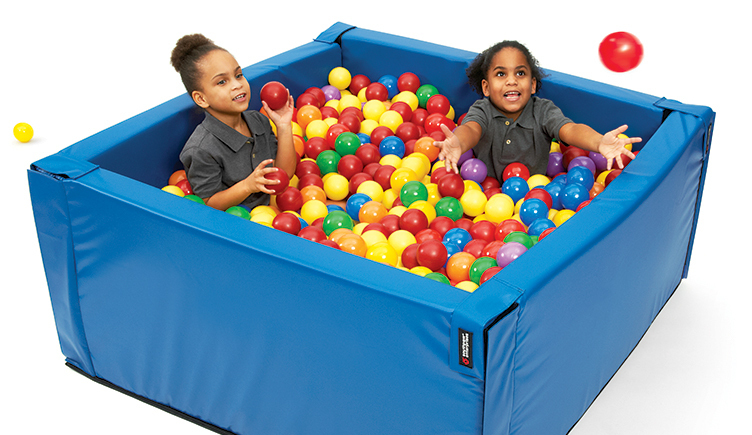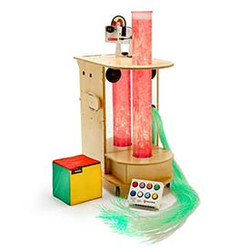Have you ever had a pediatric client with an ASD diagnosis who presented like this…Spirited and struggling at school, at home and in the community, with challenges that include anxiety, attention, emotional modulation and positive participation in functional, school and play activities?
Did he or she demonstrate some or many of the following challenges?
• Understanding abstract thought/humor, sensory triggers
• Repetitive behaviors; tough social communication
• Struggles with physical activities, especially with initiation and interactive play, with a tendency toward clumsiness
• Lack of insight and rigid thinking
• A reduced ability to incorporate learned skills into daily activities, such as play and social participation
• Verbosity, with repetitive or obsessive conversations and thoughts
• Anxiety that manifests in many areas of daily life, all to the exclusion of smelling the roses
• Easily tripped up by others’ emotions, while struggling to identify and express their own
• Reduced or absent displays of joy and emotional modulation
• Very little allowance of hugs or any other physical contact
• Does not relate to the activities and conversations of the other children at school, and has trouble developing and maintaining friendships
• Discomfort with appropriate eye-contact
• Timid to approach new activities
• Strict daily routines with predictable home environment required for success
• Unexpected changes or perceived failure at a task results in withdrawal or outbursts
• Difficulty with transitions
• Strong reactions to sensory input with accompanying scores on standardized sensory processing assessments
• Sleep interruptions
Whew! And the list could go on and on.
As therapists, we all search for a unique and successful approach to treating these unique and wonderful children. Following, we travel through the first part of an MSE scenario, constructed from a combination of many successful treatments, during my extensive use of a multi-sensory environment. I will refer to the child as R, but no specific child is represented:
The only instructions we offer…..no shoes….and have fun! We enter the white room, and R stops just inside the doorway. Dimming the overhead lights, we start with one element, the interactive 72” bubble tube across the room. As the tube lights up, the soft vibration of the bubbles rising within it can be heard, and felt through the floor.
R approaches it in small, light steps, looking back at us intermittently, waiting for more input. From the Rover, we play a light piece of electronic meditation music, slowly increasing the volume, as we lower the room lights. Bubbles of rhythmically changing colors rise in the tube, as our young client makes contact with the tube with one hand, then the other, then with his face.
During this time, we turn on the Optikinetics solar 250 LED projector, with the liquid primary color wheel. The slowly moving organic shapes in yellow, red and blue are cast onto the wall space to the side of the tube. R intermittently slides his eyes to the amoebic shapes, and back to the rising column of colorful bubbles, with a noticeable reduction in extraneous movements. It takes R about 8 minutes to touch the bubble tube, all this time in complete silence, other than the music and bubbling vibration. The bubble tube sits atop a padded platform, at the intersection of two wood-backed acrylic mirrors, which creates a magical and interactive corner. Within another three minutes, R has fully engaged in the corner of the mirrors, holding a conversation about the MSE room, with his four new reflected friends. Short laughter and then a squeal, punctuated by eye contact with us, still at the Rover. Still engaged in the mirrors, R moves back to lie prone on the adjoining platform, with its built-in vibro-acoustic feature, which is pulsing to the base beat of a more upbeat tune.
We light up our Fiber Optic Spray, which cascades down upon the vibro-acoustic platform behind him, which he notices in the mirror. Movement toward the Fiber Optic Spray is quick, and there is a look of delight, as R picks it up to wear it around his neck. He then rolls in the spray, as in a dreamy cocoon, stopping intermittently to watch the image on the wall split into multiple colorful circles, which move horizontally about the room, intersecting and then splitting at random spots. This was achieved by adding the panoramic rotator to the front of the projector. R’s gaze leaves the fiber strands, following the colors around the room, with increased head and neck movement and his gaze crossing midline, repeatedly. As R continues to engage with the experience, we line up a Starburst filter in the cassette rotator, in preparation for our next transition. A yawn emerges as our first sign of relaxation.
What amazes us is how quickly this child has adapted to the environment and appears completely comfortable. Not one child has ever questioned the lack of speaking in the MSE room! No words=less rules!
In this short first session of the MSE as a warm-up modality, we see more amounts of engagement than with any other approach, with regards to transition tolerance, sensory flexibility, relaxation, joy and interpersonal connectivity. Our bonding has begun.
(to be continued next month...)



